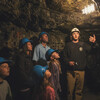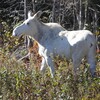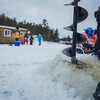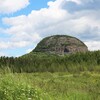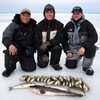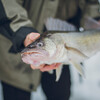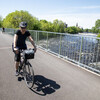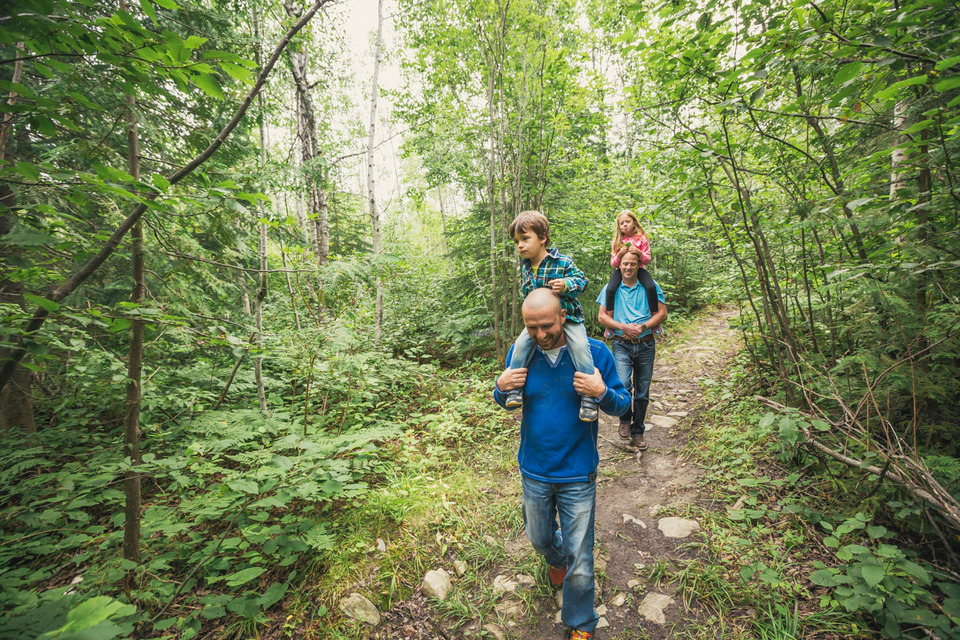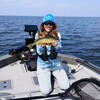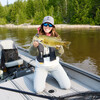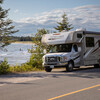Red Toque Tour: An Outdoor Adventure Through Time
Explore Northeastern Ontario's historic trails with this exciting itinerary.
Following the well-worn trails of First Nation trade routes and clad in the iconic red toque, the Voyageurs embodied the freedom of the endless spaces of Northern Ontario’s rugged wilderness. Modern-day adventurers will discover this storied past on the Red Toque Tour: a self-guided tour travelling through the traditional lands and waterways of the Anishinaabe, in the footsteps of the Voyageurs.
Where does the Red Toque Cycling Tour Start?
Following the Kate Pace Way, named after the North Bay’s own Olympic skier, the 12 km paved multiuse trail takes you to the southern end of the city into a quiet residential area. This section of the route is also part of the Trans Canada Trail, Canada’s longest multiuse trail.
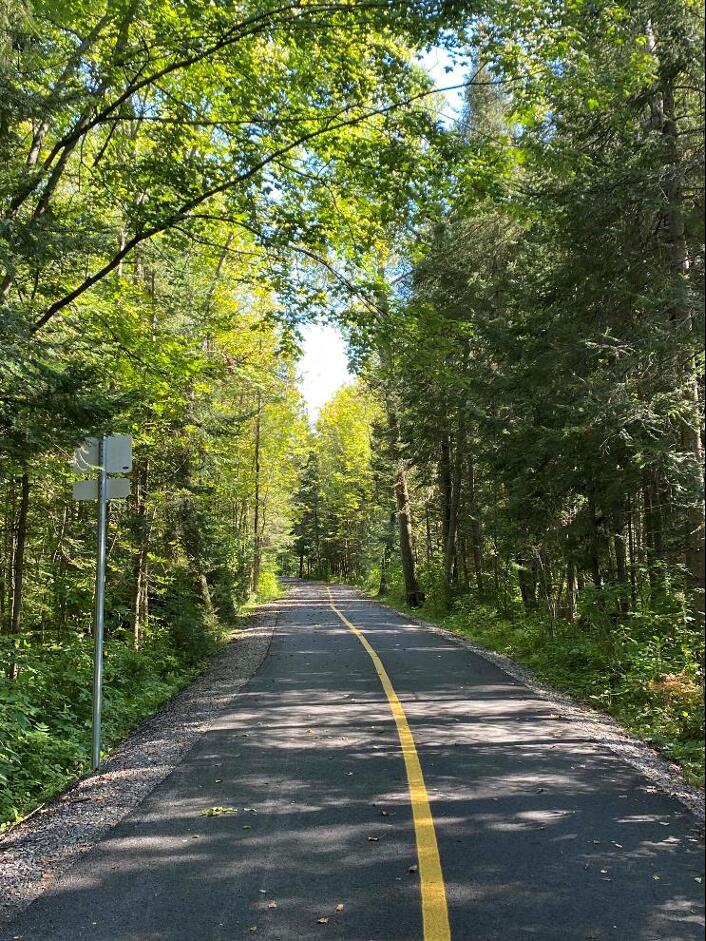
What is there to see on the Red Toque Tour?
There's plenty to see on this epic cycling tour multi-adventure! Here are the 10 best sights to see and adventures to behold.
1. The Historic La Vase River
The first historical stop is the newly reconstructed La Vase River bridge: during fur trading days, traders paddled and portaged the La Vase. Voyageurs called the river mud river as the portaging was particularly difficult over the watershed divide between Lake Nipissing and the Mattawa River. Don’t miss your chance in late July to follow in the footsteps and paddle strokes of the area’s first peoples during the Friends of La Vase Portages Canoe Day.
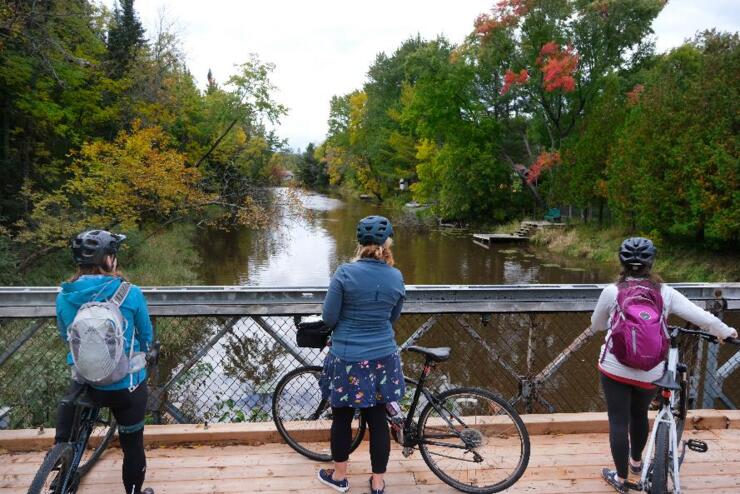
2. The Famous Cranberry Bog
At the end of the Kate Pace Way, you’re in Callander near the famous Cranberry Bog, only one of four such places in Ontario. Hike or bike the Cranberry Trail where it’s rumoured First Nations picked berries centuries ago. The bog Callander hosts an annual cranberry festival in the Fall when the cranberries are ripe for the picking.
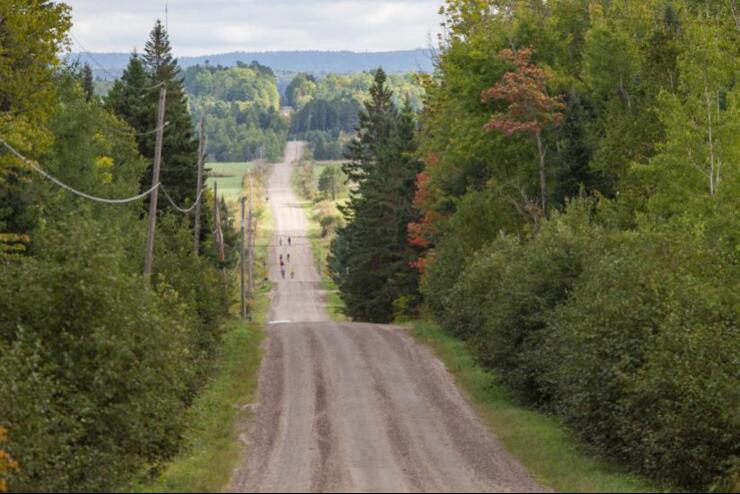
3. Quiet Gravel Backroads
Following the Voyageur Cycling Route along quiet country roads through Callander and Astorville, the route transforms east of Bonfield to an undulating gorgeous gravel road.
4. The Gorge-ous Waterfall
A must see along the way is the Eau Claire Gorge Conservation Area, where you’ll find a 12 metre waterfall. Lock up, or walk your bike, along the 1 km trail to the gorge. The trail includes plaques about the forest plants that were harvested, dried and stored by First Nations. See remnants of the logging days from the 1800s: near the gorge is a log slide that was built to move timber down the river.
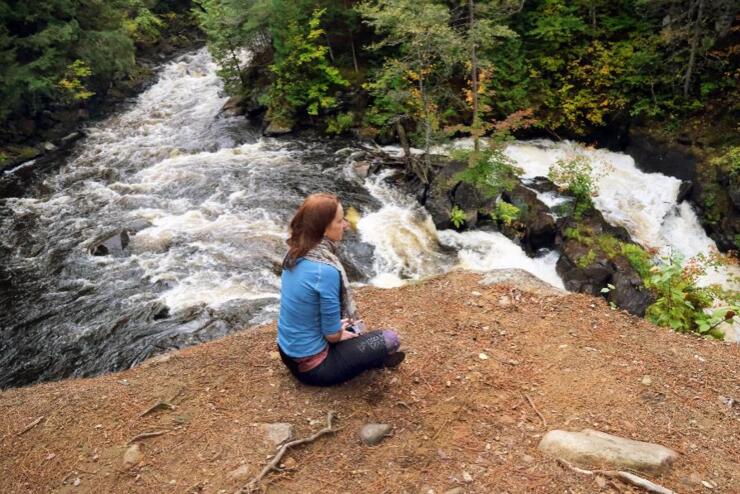
Tall pines line the river into Mattawa. This is the historical pinnacle of the ride where the Ottawa River meets the Mattawa River, and Indigenous, French and English history merge.
5. The Mattawa River
Designated a Canadian Heritage River, the Mattawa is steeped in a long history of First Nations transportation, exploration, fur trade and logging. The best way to experience this historical waterway is by canoe. A number of local outfitters can help: Voyageur Adventure Tours; Shockwaves Paddle Adventure; Algonquin North Outfitters. Don’t miss the Mattawa River Visitor Centre at Samuel de Champlain Provincial Park. It showcases the area’s natural and human history including a large birch bark freighter canoe, replicating the vessels built and used by the Voyageurs in search of beaver pelts to trade in Montreal, as they traveled the 2000km journey to Fort William on Lake Superior.
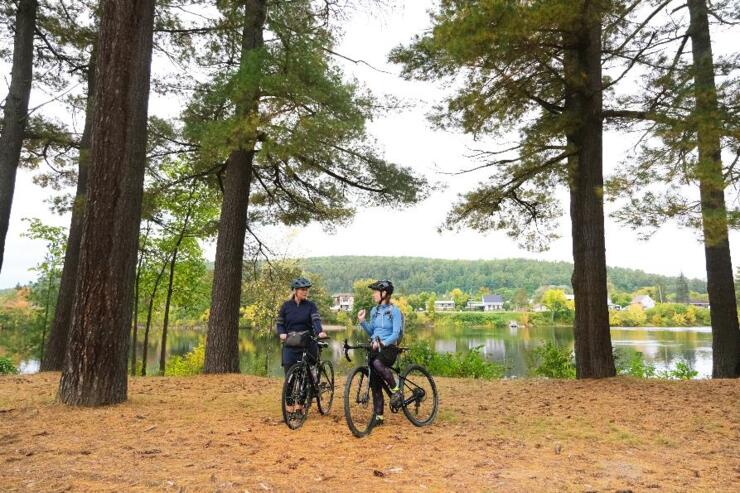
6. Explorer's Point
Tall pines line the river into Mattawa. This is the historical pinnacle of the ride tour where the Ottawa River meets the Mattawa River, and Indigenous, French and English history merge. This “meeting of the waters” was a common stop for First Nations including the Hurons, the Nipissings, the Algonkins and the Iroquois. In the era of the fur trade and Voyageurs, the site became significant with a trading post established by the Hudson’s Bay Company. Explorer’s Point is now the home to the Mattawa Museum a beautiful red pine log building that commemorates this important history.
7. The Three Crosses on a Hill
Three large white crosses stand high on the crest of the Laurentians on the Quebec side of the Ottawa River. Historical records show that in 1686, a group of French explorers and missionaries led by Sieur de Troyes were on expedition to James Bay to seize English settlements. While traveling up the Ottawa River they marked the place where the two rivers meet by erecting the three crosses. A hike to the three crosses is possible if you have a vessel to cross the river.
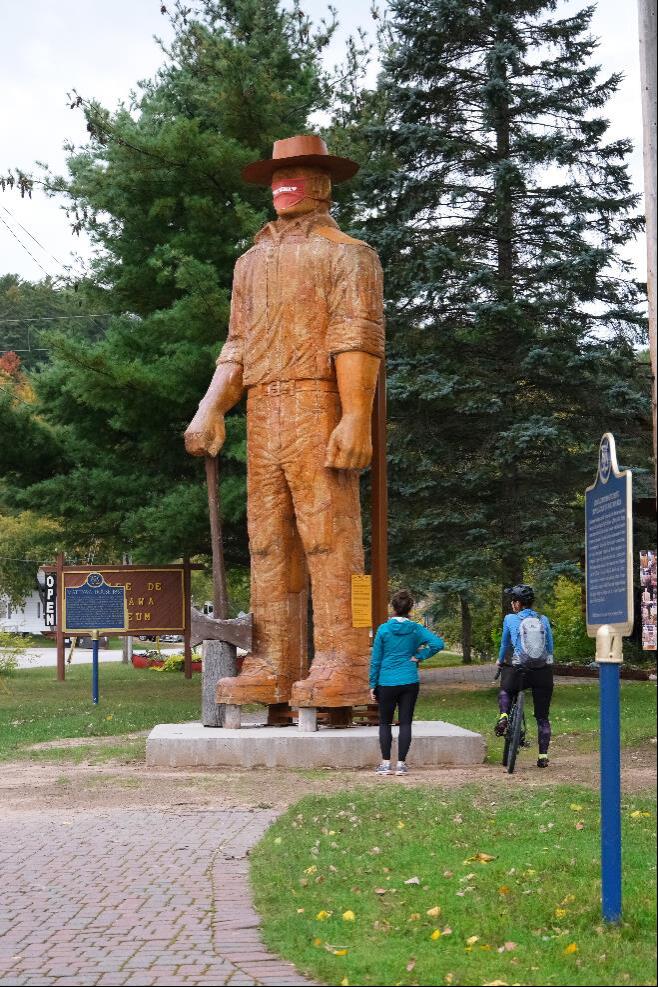
8. Big Joe Mufferaw
One of the most iconic visitors, Big Joe Mufferaw, AKA Joseph Montferrand (1802-1862) was a French Canadian folk hero, logger, and strongman. The defender-of-the-weak is immortalized in song by Canadian singer Stompin’ Tom Connors: “he had a pet frog who was bigger than a horse, and barked like a dog." Today, an almost six-metre wooden sculpture stands next to the town’s museum in Explorer’s Point.
9. Scenic Downtown Mattawa
Downtown Mattawa is also a great place to see more wood carvings of missionaries, explorers, and voyageurs who visited this place for centuries.
10. Chips, Bistros, and Live Music
To feed your hunger, Turcotte’s Chip Stand in Mattawa has been serving the community since 1944. Or stop and grab a bite at any of the certified bicycle friendly restaurants. 1886 Lake House Bistro in Callander, should be at the top of your list, the bistro not only serves up a delicious variety of locally-sourced food but it also won best bicycle-friendly business in Northeastern Ontario in 2021. Another great place to stop is The Raven & Republic in North Bay. They often have live music, local beer and a delicious menu to choose from.
The Red Toque Tour is full of history and worth taking the extra time to stop and explore these historical Northeastern Ontario landmarks and the museums that do their best to commemorate this important history.
For more information visit: https://discoveryroutes.ca/red-toque-tour-bike-ride/
Recommended Articles
The Seven's Best Hikes, Biking Trails and Lakes

7 Best Spots to Check Out in The Seven

Budget Bliss: Explore Northeastern Ontario Without Breaking the Bank

Bring Your Fam!

Time to Unwind: 6 Spa Havens to Discover In The Seven
5 Amazing Places to SUP in Northeastern Ontario

5 Amazing Bike Rides to Discover

Northern Lights in Northeastern Ontario

Northeastern Ontario's Best Pride Festivals

Fish for one of the World's Rarest Species of Trout

An Insider's Guide to Manitoulin Island

6 Small-Town Gems to Explore in Northeastern Ontario

11 Best Things to Do in Kapuskasing, Ontario





